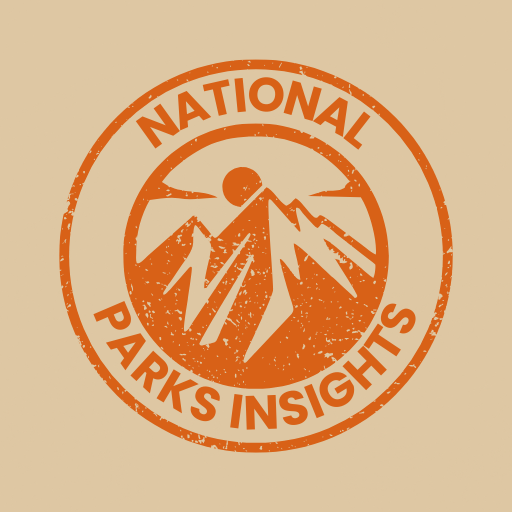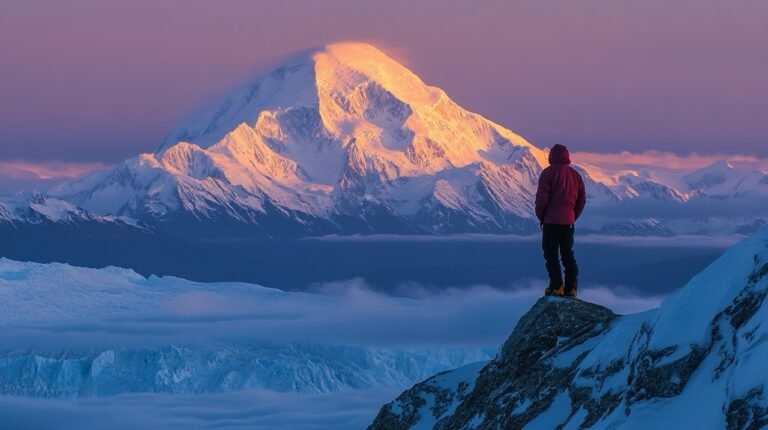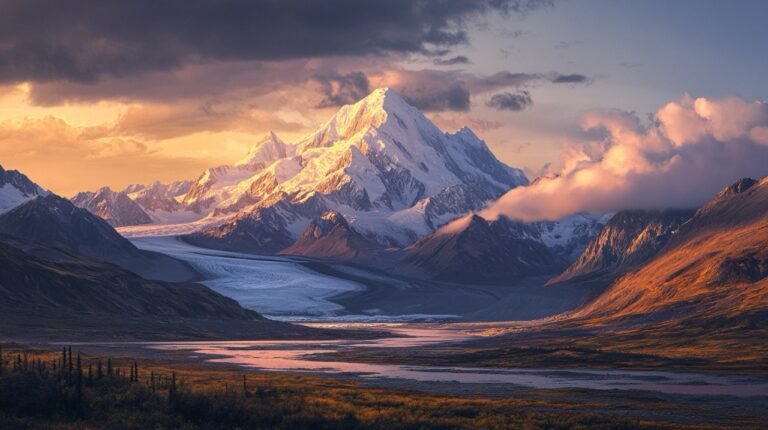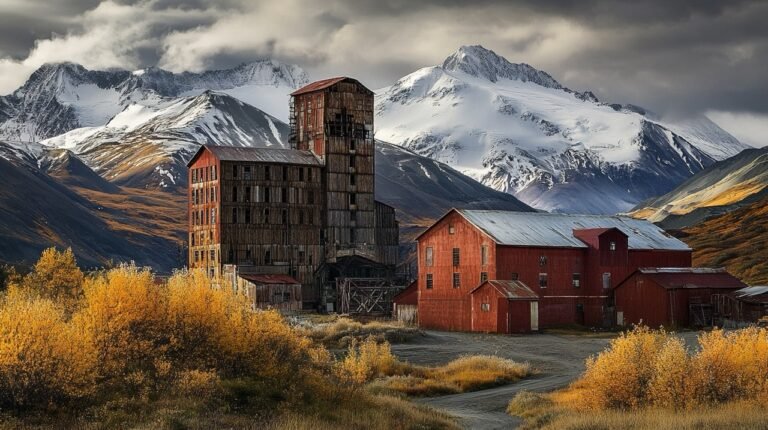Explore the Largest National Park in the United States
A Peek at Wrangell-St. Elias
Wrangell-St. Elias National Park & Preserve in Alaska is the largest national park in the U.S., sprawling over 8 million acres (32,375 km²). Nestled where four mountain ranges meet, this massive park is a feast for the eyes. It boasts some of the tallest peaks in the country, like the 18,008-foot Mount Saint Elias. With glaciers covering over a quarter of the park and a lively volcanic field, Wrangell-St. Elias is a dream come true for nature buffs.
| Feature | Description |
|---|---|
| Location | Alaska, USA |
| Size | 13.2 million acres (53,320 km²) |
| Highest Peak | Mount Saint Elias (18,008 feet) |
| Glaciers | Cover over 25% of the park |
| Volcanic Activity | Thousands of lava flows in Wrangell Volcanic Field |
For more on this stunning park, check out our page on Wrangell-St. Elias National Park.
Why It’s the Biggest

Wrangell-St. Elias isn’t just the largest national park in the U.S.; it’s bigger than the nine smallest states combined. This park covers a jaw-dropping 13.2 million acres, dwarfing Yellowstone, Yosemite, and even Switzerland. Its vast, untouched wilderness, teeming with wildlife and minimal human interference, makes it one of North America’s wildest spots.
| Comparison | Size (Acres) |
|---|---|
| Wrangell-St. Elias National Park | 13.2 million |
| Yellowstone National Park | 2.2 million |
| Yosemite National Park | 748,436 |
| Switzerland | 9.9 million |
The park’s enormous size comes from its unique geography, featuring sprawling mountain ranges, extensive glaciers, and volcanic areas. The Wrangell Volcanic Field alone covers 2,000 acres, with countless lava flows crisscrossing the region. This mix of natural wonders makes Wrangell-St. Elias a must-visit for adventurers and nature lovers.
To dive deeper into the wonders and activities in this vast wilderness, explore our page on Wrangell-St. Elias, Alaska.
Click here to see Beautiful Hotel Options at Wrangell St. Elias
Discovering the Wild Side
Must-See Spots
Step into Wrangell-St. Elias National Park & Preserve, the biggest national park in the U.S., covering a jaw-dropping 13.2 million acres. This place is packed with some of the most stunning sights you’ll ever see.
First up, Mount Saint Elias stands tall at 18,008 feet. It’s one of the highest peaks in the country and offers views that will blow your mind. Then there’s the Wrangell Volcanic Field, where thousands of lava flows spread across 2,000 acres, creating a fiery landscape that’s still bubbling with volcanic activity.
Don’t miss the Kennecott Mines, a historic copper mining site that takes you back in time. The site has several well-preserved buildings, and you can join guided tours to dive into the history and workings of the mines. For more details, check out our guide on the Kennecott Mines.
| Landmark | Description |
|---|---|
| Mount Saint Elias | One of the highest peaks in the U.S. at 18,008 feet |
| Wrangell Volcanic Field | 2,000 acres of converging lava flows |
| Kennecott Mines | Historic copper mining site with guided tours |
Wild Encounters
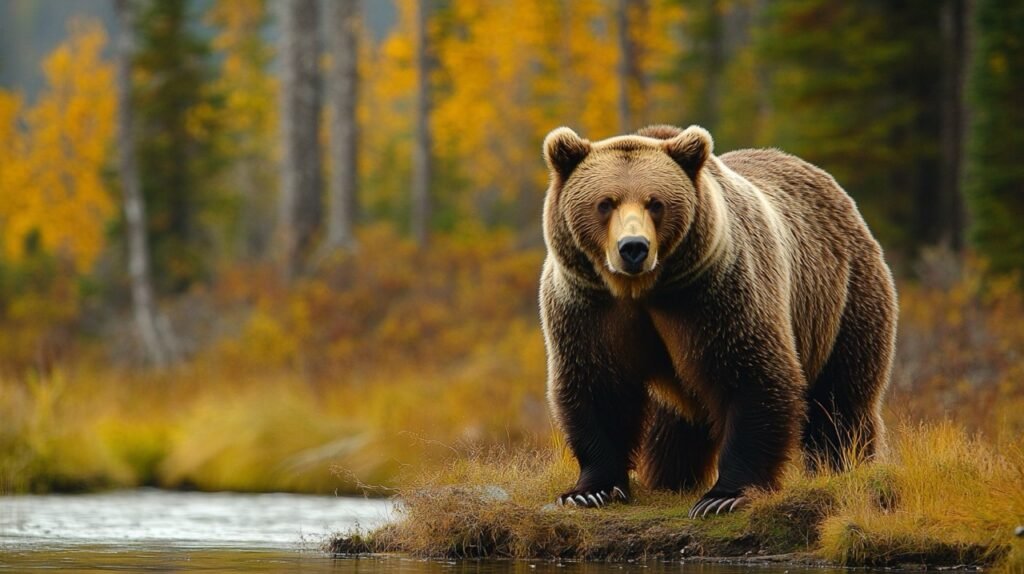
Wildlife Diversity: A Changing Habitat
Wrangell-St. Elias is a dream come true for wildlife lovers. The untouched wilderness here is home to a wide range of animals, giving you a chance to see some of North America’s most iconic creatures in their natural habitat.
Wrangell-St. Elias is home to diverse wildlife, including brown bears, wolves, caribou, and mountain goats. However, climate change has begun to affect the habitats of these iconic species. Warmer temperatures are altering migration patterns and food sources, especially for caribou and fish populations, impacting predators like bears. For visitors, this makes wildlife spotting more unpredictable, but also highlights the park’s evolving ecosystem and the importance of conservation efforts.
You might bump into grizzly bears, moose, and Dall sheep as you wander through the park. Bird watchers will be thrilled to spot golden eagles soaring high or hear the calls of migratory birds. The park’s rivers and lakes are also teeming with fish, making it a great spot for fishing.
To stay safe and have a good time, always keep a respectful distance from wildlife and follow park rules. For more tips on wildlife encounters, visit our page on Wrangell-St. Elias National Park.
| Wildlife | Description |
|---|---|
| Grizzly Bears | Often seen in the park’s remote areas |
| Moose | Commonly found near rivers and lakes |
| Dall Sheep | Usually spotted in mountainous regions |
| Golden Eagles | Frequently seen soaring above the park |
Exploring the largest national park in the U.S. offers endless chances for adventure and discovery. Whether you’re awed by the towering peaks or the diverse wildlife, Wrangell-St. Elias promises an unforgettable experience. Don’t forget to check out our travel tips for Wrangell-St. Elias Alaska to make the most of your visit.
Activities for Adventurers
If you’re all about the great outdoors, Wrangell-St. Elias, the biggest national park in the U.S., is your playground. Whether you’re into summer hikes and camping or winter sports, this park’s got you covered.
Hiking and Camping
Hiking and camping in Wrangell-St. Elias are experiences you won’t forget. The park has trails for everyone, from easy strolls to tough backcountry hikes. You’ll see everything from thick forests to towering peaks and massive glaciers.
| Trail Name | Distance (miles) | Difficulty |
|---|---|---|
| Root Glacier Trail | 4 | Moderate |
| Bonanza Mine Trail | 9 | Difficult |
| Skolai Pass | 15 | Strenuous |
Camping here lets you soak in the park’s natural beauty. There are designated campgrounds and spots for backcountry camping. Just remember to follow Leave No Trace principles to keep the place pristine.
If hiking and camping are your jam, check out the best times to visit to make the most of your trip.
New Adventure Opportunities: Explore the Untouched Wilderness
Wrangell-St. Elias now offers exciting new guided tours for thrill-seekers. Visitors can embark on glacier hiking tours led by experts, exploring the breathtaking ice formations.
Wilderness expeditions are also available for those looking to immerse themselves in the remote backcountry, with options for multi-day treks and camping in the pristine Alaskan wilderness.
These experiences provide a deeper connection with the park’s rugged beauty, ensuring every adventurer leaves with unforgettable memories.
Winter Sports
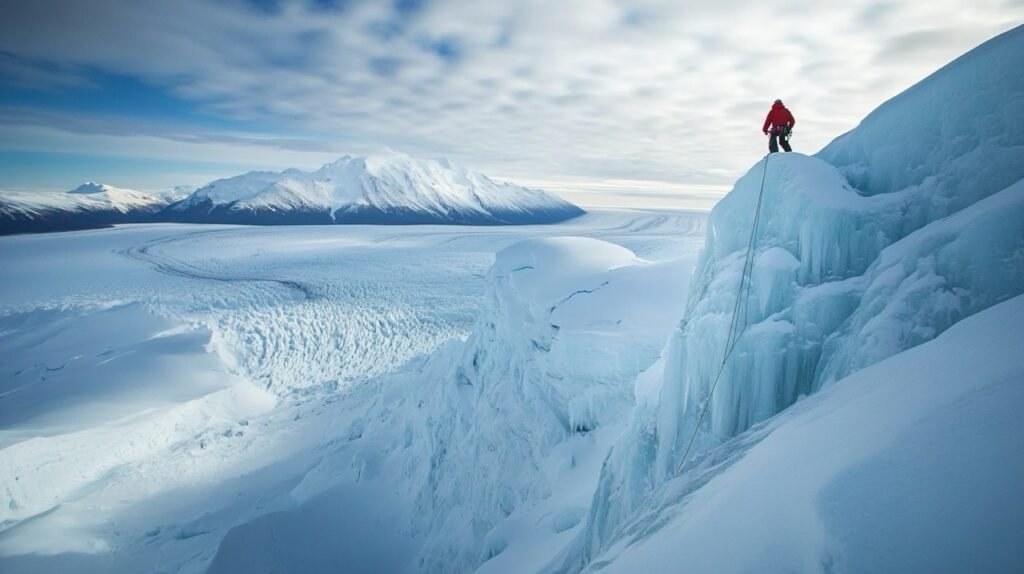
When winter hits, Wrangell-St. Elias turns into a snowy paradise for winter sports lovers. You can try cross-country skiing, snowshoeing, and even ice climbing.
- Cross-Country Skiing: Glide through the park on well-groomed trails. It’s great for all skill levels.
- Snowshoeing: Walk through snowy landscapes and enjoy the park’s quiet beauty. Snowshoeing lets you explore areas you can’t reach in summer.
- Ice Climbing: For the thrill-seekers, ice climbing on the park’s glaciers is a real adrenaline rush.
Make sure you have the right gear and check the weather before you go. For more tips on winter activities, visit our travel tips.
Whether you’re hiking through lush forests or skiing across snowy fields, Wrangell-St. Elias offers endless outdoor adventures. Check out the park’s unique features like Mount St. Elias and learn about the rich indigenous heritage that makes this place special.
Click here to see Beautiful Hotel Options at Wrangell St. Elias
Unique Geological Features
Wrangell-St. Elias National Park & Preserve is a goldmine of natural wonders. From sky-high mountains to sprawling glaciers and fiery volcanoes, this park is a feast for the eyes.
Mountains and Glaciers
First up, the mountains. Wrangell-St. Elias is where four mountain ranges collide: Wrangell, St. Elias, Chugach, and the eastern Alaska Range. Among these giants, Mount Saint Elias steals the show, towering at 18,008 feet. It’s one of the tallest peaks in the U.S. and Canada.
Glaciers cover a huge chunk of the park, making it a paradise for glaciologists and thrill-seekers. Over a quarter of the park is blanketed in ice, with stars like the Nabesna Glacier and the Malaspina Glacier. These icy giants don’t just sit there; they carve valleys and shape the land.
| Mountain | Height (feet) | Notable Feature |
|---|---|---|
| Mount Saint Elias | 18,008 | Second highest peak in both the U.S. and Canada |
| Mount Wrangell | 14,163 | Active shield volcano |
| Mount Blackburn | 16,390 | Highest peak in the Wrangell Mountains |
Want more on these towering peaks? Check out our article on Mount St. Elias.
Volcanic Activity
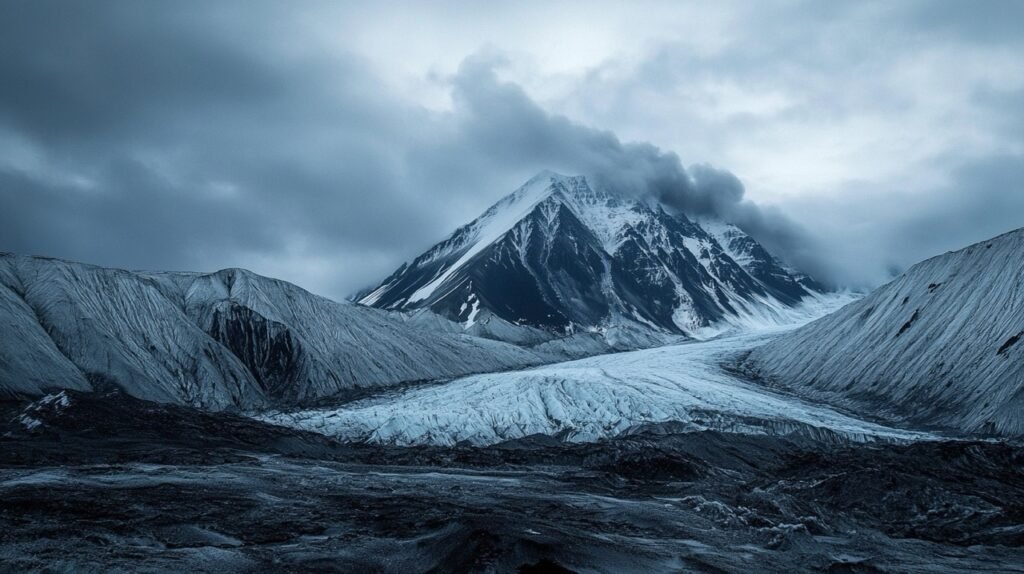
Wrangell-St. Elias isn’t just about ice and rock; it’s also a hotspot for volcanic action. The Wrangell Volcanic Field covers over 2,000 acres and is packed with lava flows. Mount Wrangell, an active shield volcano standing at 14,163 feet, is a standout. It’s famous for its gentle slopes and ongoing volcanic activity.
| Volcano | Height (feet) | Notable Feature |
|---|---|---|
| Mount Wrangell | 14,163 | Active shield volcano with multiple lava flows |
| Mount Drum | 12,010 | Known for its steep, symmetrical shape |
| Mount Sanford | 16,237 | One of the tallest volcanoes in North America |
The volcanic landscape adds another layer of excitement to the park, making it a must-see for geology buffs. For more volcanic goodness, dive into our article on Wrangell St. Elias National Park.
With its jaw-dropping mountains, glaciers, and volcanic activity, Wrangell-St. Elias is a geological playground. Whether you’re a hardcore hiker, a wildlife lover, or just someone who digs natural beauty, this park has got you covered. Plan your trip and soak in the splendor of the largest national park in the U.S.
Historical and Cultural Insights
Indigenous Heritage
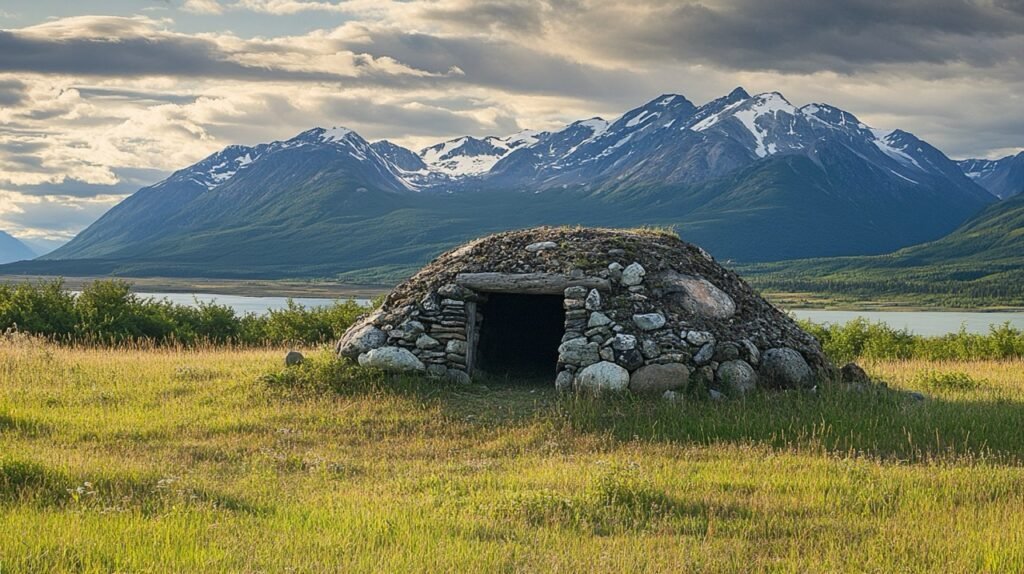
Wrangell-St. Elias National Park isn’t just about jaw-dropping landscapes; it’s also a place bursting with cultural history. Indigenous peoples have called this area home for thousands of years. The Ahtna people, for example, have a deep bond with the land, relying on its resources for their way of life.
As you wander through the park, you might stumble upon ancient hunting camps, fishing spots, and old trails that whisper stories of the indigenous communities. These sites offer a peek into the long-standing relationship between the native peoples and their homeland. The park works hand-in-hand with local indigenous communities to honor and preserve their cultural heritage.
Park’s Establishment
Wrangell-St. Elias National Park & Preserve came into being on December 2, 1980, thanks to the Alaska National Interest Lands Conservation Act (ANILCA). This act aimed to protect the area’s vast wilderness and unique geological features while allowing traditional activities like subsistence hunting and fishing to continue.
Covering over 13.2 million acres, Wrangell-St. Elias is the biggest national park in the U.S. It includes the meeting point of four major mountain ranges: the Wrangell, St. Elias, Chugach, and Alaska ranges. Among its many natural wonders is Mount St. Elias, one of North America’s highest peaks at 18,008 feet.
The park’s creation was part of a larger movement that started with Yellowstone National Park in 1872. The National Park Service, established by President Woodrow Wilson on August 25, 1916, aims to conserve the scenery, natural and historic objects, and wildlife of these federal areas for future generations. This mission is alive and well in Wrangell-St. Elias, ensuring its pristine landscapes and rich cultural history are preserved.
For more tips on planning your visit to this stunning park, including travel advice and the best times to visit, check out our detailed guides.
Planning Your Visit
Thinking about a trip to Wrangell-St. Elias in Alaska, the biggest national park in the U.S.? Here’s the lowdown on when to go and some handy tips to make your adventure awesome.
Best Times to Visit
Wrangell-St. Elias National Park has something special in every season. Here’s a quick guide to help you pick the best time for your visit:
| Season | Average Temperature (°F) | Activities |
|---|---|---|
| Summer (June – August) | 45 – 70 | Hiking, camping, wildlife watching |
| Fall (September – October) | 30 – 50 | Photography, bird watching |
| Winter (November – March) | -20 – 30 | Cross-country skiing, snowshoeing |
| Spring (April – May) | 25 – 45 | Early-season hiking, snow melt views |
Summer’s the crowd favorite with its mild temps and long days, perfect for hiking and camping. Winter’s for the brave, offering snowy fun like skiing and snowshoeing. Fall and spring? Fewer folks and jaw-dropping scenery changes.
Travel Tips
Make your trip to Wrangell-St. Elias unforgettable with these tips:
- Prepare for Remote Travel: This place is off the grid. Pack plenty of supplies—food, water, and fuel.
- Check Weather Conditions: Alaska’s weather is a wild card. Always check the forecast and be ready for anything.
- Wildlife Safety: The park’s got a lot of critters. Keep your distance and stash your food safely to avoid bear encounters.
- Guided Tours: Want the inside scoop? Join a guided tour. Guides can show you cool spots like Mount St. Elias and Kennecott Mines.
- Essential Gear: Don’t forget a map, compass, first-aid kit, and bear spray. Cell service is sketchy, so don’t count on your phone’s GPS.
- Permits and Regulations: Some activities need permits. Check the park’s website for the latest on permits and rules.
- Best Routes: The park’s huge and the roads can be tricky. Do your homework on the best routes and plan your trip accordingly.
Park Conservation Efforts: Preserving the Vast Wilderness
In recent years, Wrangell-St. Elias has ramped up conservation efforts to protect its delicate ecosystems. These initiatives include programs to reduce human impact on wildlife habitats, particularly in sensitive areas like glaciers and tundra. The park also collaborates with indigenous communities to implement sustainable practices that honor the land’s heritage while safeguarding its future. These efforts ensure that the park remains a sanctuary for wildlife and a pristine destination for generations to come.
For more info on planning your visit, check out our articles on Wrangell-St. Elias National Park and Wrangell St. Elias Alaska.
